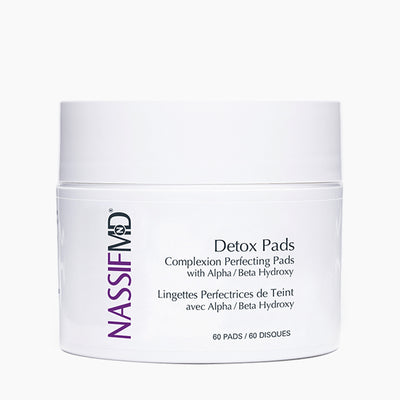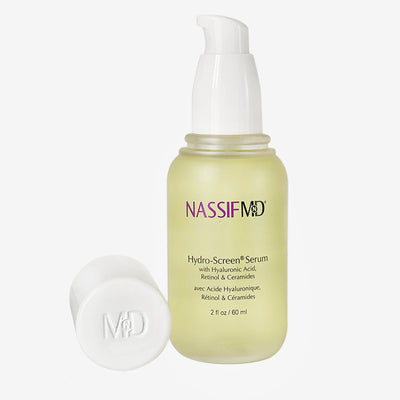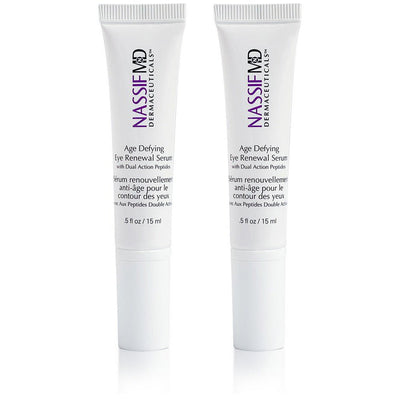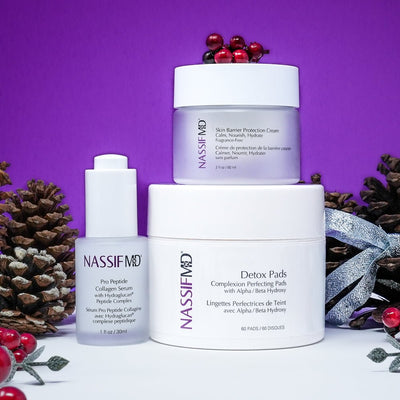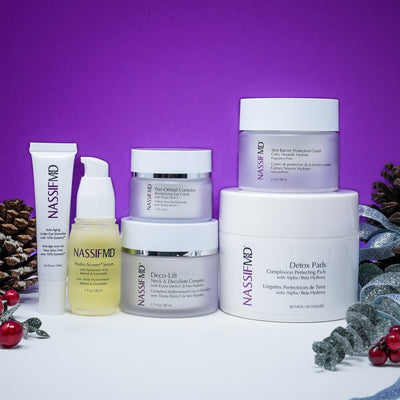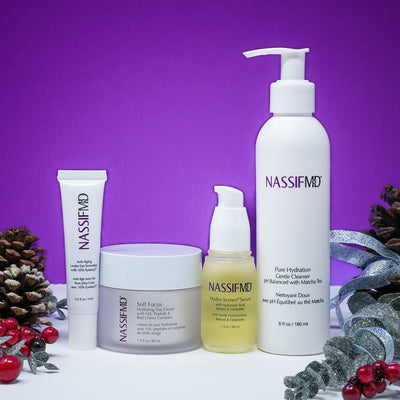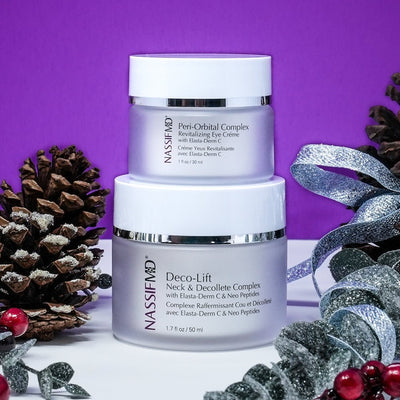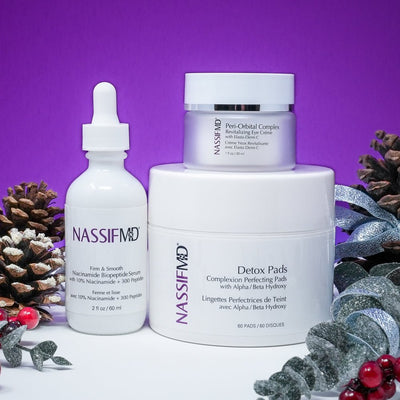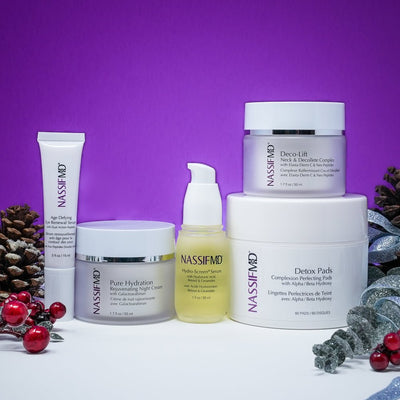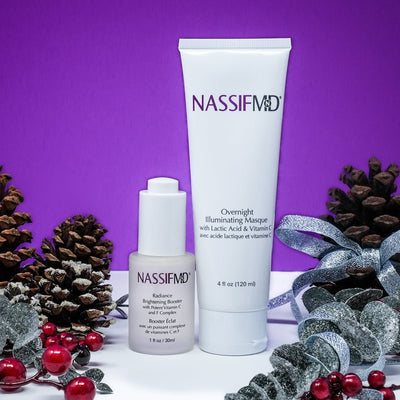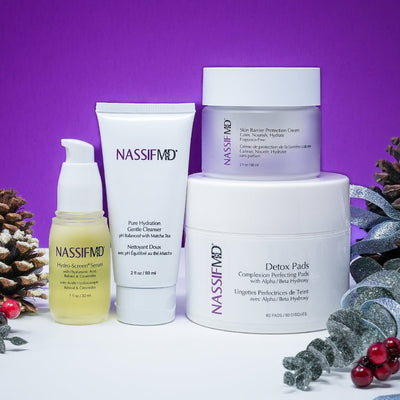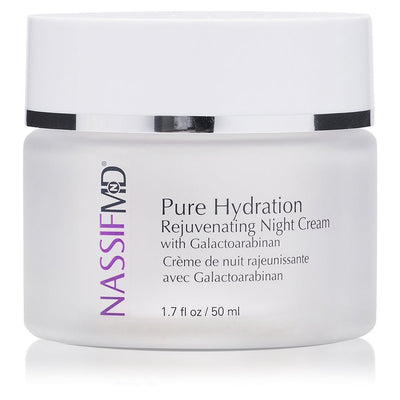How Often Should You Exfoliate? A Plastic Surgeon’s Guide to Glowing Skin
Skin exfoliation is an essential part of any effective skincare routine, as it removes dead skin and impurities, while promoting skin turnover for a younger, healthier, and glowing complexion. When you don’t exfoliate, your skin may be dull and lackluster, with an increased risk for clogged pores and acne. However, when you exfoliate too much, you risk irritation and redness.
Today’s article is aimed at helping you find your sweet spot with exfoliation, not too much or too little, but just the right frequency for you. Keep reading as we answer these questions and more with the facial plastic surgeon’s perspective:
- What is exfoliating? What does exfoliating do?
- How often should you exfoliate your face?
- What’s the difference between an exfoliating scrub and chemical exfoliators?
- Can I exfoliate every day? Spoiler: it depends on your skin type
- What are the signs of over-exfoliating?
- What are the best exfoliation products from NassifMD® Skincare
How Often Should You Exfoliate
Your frequency of exfoliating will be unique to you and depend upon many factors that may change over time and with the season. Instead of providing you with hard and fast rules, we are going to teach you where to start and how to adjust your exfoliating routine based on your skin’s needs.
You’ll want to exfoliate as often as possible to see the benefits without showing signs of over-exfoliation. If you are just getting started, exfoliate less frequently and increase as your skin acclimates, adjusting from there.
Factors that affect exfoliation frequency include:
- Skin type (more on this below)
- Age
- Climate
- Season
- Skincare routine
Chemical Vs. Physical Exfoliation Methods
There are two types of skin exfoliation: physical and chemical. Both methods remove dead skin cells, dirt, and impurities from the skin’s surface and pores. Both methods offer similar benefits when used correctly and at an optimal frequency, effectively unclogging pores, reducing breakouts, and improving the skin’s texture, tone, and appearance.
Physical exfoliation uses a physical method such as a textured, abrasive exfoliating scrub or brush, and the action of rubbing the skin. You’ll find physical exfoliants as part of skincare products, such as sugar or salt scrubs, or Ecuadorian ivory palm seeds in NassifMD® Skincare. Exfoliators for the body are often physical as well.
Chemical exfoliation harnesses the power of hydroxy acids, which break down bonds between skin cells, allowing them to slough away. It’s unnecessary to scrub your skin with products containing chemical exfoliants, as the active ingredients do all the work. Examples of chemical exfoliants include glycolic acid, lactic acid, mandelic acid, and phytic acid.
Read more about the differences between physical and chemical exfoliants and how they promote smooth, radiant skin in this article.
Exfoliation Frequency by Skin Type
Your skin type is a primary factor in determining how much exfoliation your skin needs and will tolerate. Here are some initial guidelines to consider, but remember always to start slow and increase frequency over time:
- Normal skin – exfoliate skin 2 to 3 times per week
- Dry skin – exfoliate 2 times per week
- Sensitive skin – exfoliate 1 or 2 times per week
- Oily or acne-prone skin – exfoliate several times weekly, and up to daily
- Combination skin – somewhere in between, perhaps 3 to 4 times per week
Based on your skin type, you can also consider what exfoliating agent is best, including chemical or physical. You’ll also want to consider how gentle or strong the specific exfoliating agent is. Read this article to learn more about choosing the perfect exfoliator for your skin type.
How often should you exfoliate your body? You may be able to exfoliate more often, especially in thicker skin areas like the elbows and feet. A body exfoliator may be gentle and designed for more frequent use. Again, pay attention to how your skin responds and adjust accordingly.
Signs You’re Over-Exfoliating Your Skin
As you incorporate or increase skin exfoliation into your daily routine, pay attention to how your skin responds and whether you need more exfoliation or less.
Too much exfoliation for the face can look like:
- Redness
- Irritation
- Skin peeling
- Uncomfortable or tight feeling
Additionally, remember that exfoliation is just one part of a skincare routine. Begin with cleansing and exfoliating, followed by a toner, serums, a moisturizer, and sunscreen during the day. By using high-quality products with potent active ingredients for skin rejuvenation from NassifMD® facial plastic surgeon skincare, you can heighten the results of exfoliation and promote skin renewal and regeneration.
Best Exfoliating Products for Beginners
Now that you have an idea about how often to exfoliate based on your skin type, let’s explore some of the exfoliating products to choose from.
NassifMD® Dawn to Dusk AM + PM is a dual-action cleanser plus a gentle exfoliant for the face. It’s gentle enough to use twice daily for most skin types because it utilizes phytic acid as a gentle chemical exfoliant and Ecuadorian ivory palm seeds as a physical exfoliant. Use it as the first step of your skincare routine to wash away dirt, makeup, debris, and excess oil and transform the skin.
NassifMD® Detox Facial Pads – Original are an exceptional and effortless way to add exfoliation to your routine. After cleansing, simply wipe the skin with these award-winning detox pads for exfoliating power. The detox pads feature more potent chemical exfoliators, including salicylic acid, glycolic acid, and lactic acid, along with bakuchiol (a retinol alternative, ectoin, and vitamin C. For dry skin, start with twice weekly and work up to daily use. For normal skin, start with three times per week and work up to daily use. For oily skin, use up to two times per day.
NassifMD® Detox Facial Pads – Gentle are our gentler version of the original detox pads, designed for maximum exfoliating power for even the most sensitive skin. Without salicylic acid and other stronger exfoliants, this detox pad option includes witch hazel, aloe, plant extracts, and hyaluronic acid to detoxify and rejuvenate the skin.
NassifMD® Micro-Spa Radiance Resurfacing Peel is an at-home version of a popular exfoliating medical spa treatment and offers a complete skin reset. It’s a two-step process. Step One is the Radiance Resurfacing Mask with Vitamin C Crystals, and Step Two is the Radiance Activating AHA/BHA Gel. Recommended use is once or twice weekly.
NassifMD® Glycolic Microdermabrasion Skin Perfecting Polish contains glycolic acid and Ecuadorian ivory palm seeds, along with ectoin and a retinol alternative, Luremin, for powerful, fast exfoliation and rejuvenation. Additional benefits include reduced inflammation, fewer wrinkles, and brighter skin tone.
Skin exfoliation is an essential step in achieving your skin health goals, but determining the optimal frequency for exfoliation can take some experimentation. Start slow, listen to your skin’s feedback, and adjust as needed. We started with the question “how often should one exfoliate their face?” But perhaps the more pressing question is which amazing NassifMD® exfoliator will you try first?


